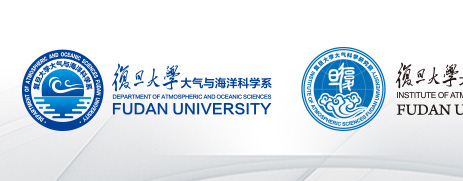|
国家杰出青年基金获得者(2011)
国务院特殊津贴专家 (2012)
中国青年科技奖(2013)
“国家百千万人才工程”入选者(2014)
创新人才推进计划“中青年科技创新领军人才”(2014)
联系方式:
www.94365.com
上海市杨浦区淞沪路2005号
办公室:环境科学楼6040室
电子邮箱: wghocean@yahoo.com
教育经历:
1996.7 成都气象学院 天气动力学专业 学士学位
1999.7 国家海洋局第二海洋研究所 物理海洋专业 硕士学位
2004.5 中国海洋大学 物理海洋专业 博士学位
工作经历:
1999.7-2000.12 国家海洋局第二海洋研究所 研究实习员
2001.8-2004.11 国家海洋局第二海洋研究所 助理研究员
2004.12-2007.11 国家海洋局第二海洋研究所 副研究员
2007.12-2016.5 国家海洋局第二海洋研究所 研究员
2016.6- 复旦大学 特聘教授
1998.2-1999.2 香港科技大学 访问学者
2001.1-2001.8 美国海军研究生院 访问学者
2009.4-2009.8 美国马里兰大学 访问学者
2010.1-2011.1 美国夏威夷大学 访问学者
2013.2-2014.2 美国Scripps海洋研究所 访问学者
学术兼职:
中国气象学会台风委员会,副主任委员
研究方向:
物理海洋学,海气相互作用,海洋环流,气候变化
主要学术成就:
一直致力于南海环流研究,在国内外主要期刊上发表论文40余篇,大多以第一作者发表在Geophysical Research Letter、Journal of Geophysical Research、Journal of Climate和Journal of Physical Oceanography 等著名杂志上。在南海中尺度涡、海气相互作用和深层环流等领域做出了系统性研究成果,对提高南海水文关键动力过程和规律的认识有重要的意义, 并被广泛引用。学术贡献如下:
1) 南海中尺度涡研究。系统地研究了南海中尺度涡源地、运动规律和影响:发现了南海东侧气旋涡与反气旋涡交错有序等南海涡旋重要分布特征,提出了南海中尺度涡生成机制的两个新观点,指出了涡旋对南海锋面的形成有重要影响,较好地回答了南海多涡结构的成因及其影响。
2)南海海气相互作用研究。把季风与台风联系起来,指出了东亚季风是控制台风生成地点和季节性变化的主因;进一步研究了台风对南海环流的影响,指出了台风的涡度输入能对南海的环流有重要的影响;还揭示了季风在东向急流季节性和年代际变化中的主导作用;提出了季风-陆地地形相互作用对北部湾温度的影响,改变了我们对北部湾海表温度及形成机理的认识。
3)南海深层环流研究。发现了南海中部深层有一个低盐中心,指出了盐度变化是南海深层环流变化的主因,首次定量给出了南海深层大尺度环流的结构特征。进一步,提出了南海深层环流对上层环流有重要影响的观点。
主要科研项目:
2015.1-2018.12 主持国家自然科学基金重大研究计划重点支持项目“南海深层西边界流的观测与模拟”(91428206)
2013.1-2017.8 主持国家973课题“海洋中尺度过程与台风的相互作用” (2013CB430301)
2012.1-2015.12 主持国家自然科学杰出青年基金“物理海洋学:南海海盆尺度环流与中尺度涡相互作用”(41125019)
2010.1-2012.12 主持国家自然科学基金面上项目“海洋环境在南海土台风形成发展中的作用”(40976017)
2008.7-2011.6 主持国际科技合作“多源海洋数据同化技术研究”(2008DFA22230)
2007.7-2011.8 主持国家973课题“太平洋西边界流与中国近海的热盐交换” (2007CB816003)
2007.1-2009.12 主持国家自然科学基金面上项目 “南海次海盆风应力旋度场驱动中尺度涡的动力过程研究” (40676007)
2006.1-2006.12 主持国家自然科学基金面上项目“季风-陆地地形相互所形成的风应力旋度场驱动南海中尺度涡的动力过程研究” (40576019)
代表性文章:
1.Wang, G., S. P. Xie, R. X. Huang, C. Chen (2015). Robust warming pattern of global subtropical oceans and its mechanism. J. Climate, 28(21), 8574-8584.
2.Ling, Z., G. Wang*, C. Wang (2015). Out-of-phase relationship between tropical cyclone generated locally in the South China Sea and non-locally from the Northwest Pacific Ocean. Clim. Dyn., 45, Issue 3, pp 1129-1136. DOI 10.1007/s00382-014-2362-7.
3.Yan, Y., G. Wang*, C. Wang, & J. Su (2015). Low‐salinity water off West Luzon Island in summer. J. Geophys. Res. Oceans, 120(4), 3011-3021.
4.Chen, C. and G. Wang* (2015). Role of North Pacific Mixed Layer in the Response of SST Annual Cycle to Global Warming. J. Climate, 28, 9451–9458.
5.Chen, C., and G. Wang* (2014). Interannual variability of the eastward current in the western South China Sea associated with the summer Asian monsoon, J. Geophys. Res. Oceans, 119(9), 5745-5754, doi:10.1002/2014JC010309.
6.Wang, G., Z. Ling, R. Wu, C. Chen (2013). Impacts of the Madden–Julian Oscillation on the Summer South China Sea Ocean Circulation and Temperature. J. Climate, 26, 8084–8096. doi: http://dx.doi.org/10.1175/JCLI-D-12-00796.1
7.Wang, G., R. X. Huang, J. Su, and D. Chen (2012). The effects of thermohaline circulation on wind-driven circulation in the South China Sea. J. Phys. Oceanogr., 42: 2283-2296.
8.Wang, G., J. Li, C. Wang, and Y. Yan (2012). Interactions among winter monsoon, mesoscale eddy and thermal front in the South China Sea. J. Geophys. Res. Oceans, 117, C08002, doi:10.1029/2012JC008007.
9.Li, J., G. Wang*, S.-P. Xie, R. Zhang, and Z. Sun (2012). A winter warm pool southwest of Hainan Island due to the orographic wind wake, J. Geophys. Res. Oceans, 117, C08036, doi:10.1029/2012JC008189.
10. Wang, G., S.-P. Xie, T. Qu, and R.-X. Huang (2011). Deep South China Sea circulation. Geophys. Res. Lett., doi:10.1029/2010GL046626,2011
11. Wang, G., C. Wang, and R.-X. Huang (2010). Interdecadal variability of eastward current in the South China Sea associated with the Summer Asian Monsoon. J. Climate, 23, 6115-6123.
12. Jin, B., G. Wang*, Y. Liu and R. Zhang (2010). Interaction between the East China Sea Kuroshio and the Ryukyu Current as revealed by the self-organizing map. J. Geophys. Res. Oceans, 115, C12047, doi:10.1029/2010JC006437.
13. Wang, G., Z. Ling, and C. Wang (2009). Influence of tropical cyclones on seasonal ocean circulation in the South China Sea. J. Geophys. Res. Oceans, doi:10.1029/2009JC005302.
14. Wang G., D. Chen and J. Su (2008). Winter eddy genesis in the eastern South China Sea due to orographic wind-Jets. J. Phys. Oceanogr., 38, 726-732.
15. Wang G., J. Su, Y. Ding and D. Chen (2007). Tropical cyclones genesis over the South China Sea. J. Mar. Syst., 68(3-4), 318-326.
16. Wang, G., D. Chen and J. Su (2006). Generation and life cycle of the dipole in summer South China Sea circulation. J. Geophys. Res. Oceans, 111, c06002.
17. Wang, G., J. Su, and P. C. Chu (2003). Mesoscale eddies in the South China Sea Observed with Altimetry. Geophys. Res. Lett., 30(21) 2121 10.1029/ 2003GL018532. |


